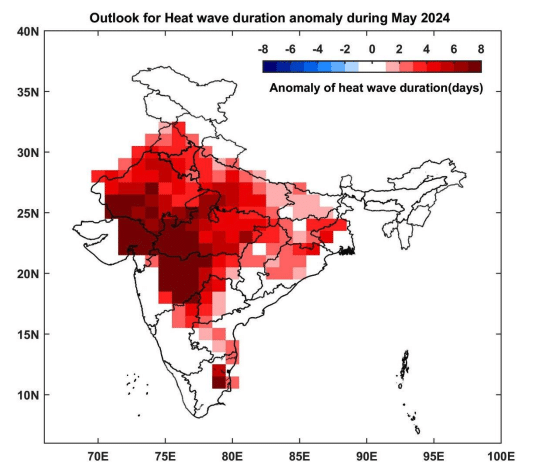Above-average temperatures will continue in May, India’s weather office said on Wednesday. Meanwhile, a lack of precipitation in the southern city of Bengaluru exacerbated a dry spell that began more than five months ago.
—
At least nine people have died in India during a record-breaking heatwave that scorched the country in April, with the weather office warning that above-average temperatures will continue throughout the first week of May.
Last month, eastern India recorded their highest minimum and mean temperature (28.2C) since records began in 1901, making April the hottest on record in the region. The eastern states of Odisha, West Bengal, and Jharkhand, registered 18, 16, and 10 heatwave days, respectively.
Southern parts of the country also registered record temperatures in April, with the average maximum temperature for the month reaching 37.2C, the second-highest on record after 2016. Bengaluru, the capital and largest city of the southern state of Karnataka, broke heat records, too. Aside from registering “appreciably above normal” temperatures – meaning temperatures 3.1-5C above normal for this time of year – for at least 10 days, a lack of precipitation throughout the month exacerbated a dry spell that has been affecting the country since November 2023.
The city of nearly 12 million saw less than 1mm of rain last month – an amount so insignificant that was not even taken into account – making April the city’s driest since 1983.
According to Mrutyunjay Mohapatra, India Meteorological Department’s (IMD) chief, last month’s heat wasn’t “entirely unexpected.” Speaking with Times of India, Mohapatra said the conditions were partly to blame on El Niño, a weather pattern associated with the unusual warming of surface waters in the Pacific Ocean, as well as on an anti-cyclonic circulation in central Bay of Bengal associated with hot and dry conditions in eastern India.
The heatwave is expected to continue well into May.
“Above normal maximum temperatures are likely over most parts of the country except most parts of northeast India, some parts of northwest and central India and adjoining areas of northeast peninsular India where normal to below normal maximum temperatures are likely,” the IMD said on Wednesday in its monthly outlook for temperatures and rainfall in May, adding that parts of the country, western regions in particular, will likely see the number of heatwave days “above normal by about 5-8 days.”
In Bangaluru, May 1 went down as the second-hottest May day in history. The maximum recorded temperature of 38.1C – 4C above normal – ranked as the sixth highest maximum temperature in the city.

Rising Trend
Summers in India have been particularly hot in recent years. A record-breaking heatwave that hit the country and neighbouring Pakistan in 2022 was made 30 to 100 times more likely to occur by human-induced climate change. Last year, scorching heat again baked the country for several consecutive months, leading to major crop losses, wildfires, power shortages, and increased coal production to meet soaring energy demands. Already among the world’s most water-stressed countries, last year’s heatwave also led to water shortages and an economic slowdown due to a loss of productivity, as thousands of Indians were unable to work in the extreme heat. Farmers were among the worst-hit as they struggled to rescue wheat crops.
More on the topic: The India Coal Dilemma Amid Record-Breaking Heatwave
The Intergovernmental Panel on Climate Change (IPCC) has warned that intense heatwaves will become more frequent and more severe.
2023 was the hottest year on record, supercharged by the return of El Niño, a weather phenomenon that has pushed temperatures off the charts around the world and that is expected to last well into 2024. As expected, the trend continued in the first few months of the new year, with March 2024 becoming the 10th consecutive month to break records, with temperatures at 1.77C above an estimate of the February average for 1850-1900.
In February 2024, the EU weather service Copernicus recently confirmed that the critical 1.5C global warming threshold set in the Paris Agreement was breached over a twelve-month period for the first time in history, with global temperatures at 1.58C above the 19th century benchmark. While this does not signal a permanent breach of the limit, which scientists say is measured over decades, it sends a clear warning to humanity that we are approaching the point of no return much faster than expected.
This story is funded by readers like you
Our non-profit newsroom provides climate coverage free of charge and advertising. Your one-off or monthly donations play a crucial role in supporting our operations, expanding our reach, and maintaining our editorial independence.
About EO | Mission Statement | Impact & Reach | Write for us


















